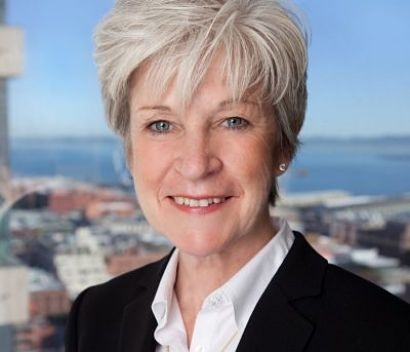
The company formed a strategic alliance with Schneider Electric and The Carlyle Group and has a top executive team which formerly worked with Hitachi and RET Capital. It develops holistic and flexible solutions to deliver predictable, reliable, secure and resilient energy solutions which can run in parallel or completely independent of the utility grid.
REM spoke to Karen Morgan, DEN President & CEO to find out more about the company and its plans for transformation of the energy market.
Can you tell me about DEN and what it does?
Dynamic Energy Networks is a global energy infrastructure platform. We own, operate and manage energy infrastructure in key market sectors, such as the commercial and industrial, municipality, healthcare, university campus and military sectors.
What is the Energy as a Service market?
Energy as a Service redefines the relationship between users and sources of energy. It shifts the cost and the risk to DEN, as a third-party owner, and enables optionality or choice of energy source.
For example, let’s say a hospital has a combined heat and power (CHP) plant and would benefit from adding solar and storage. DEN could acquire the existing CHP plant and integrate solar and storage to create a microgrid solution at no cost and no risk to the hospital. This allows the hospital to redirect their capital and resources internally, and shifts a capital expenditure to an operational expenditure. These bespoke solutions could be in the form of a long-term power purchase or concession agreement.
Can you tell me more about the microgrids you intend to provide?
We provide something much broader than microgrids; we provide energy infrastructure. Energy infrastructure is the integration of critical technology components and, in the case of microgrids, it might include a base load, such as combined heat and power (CHP) plus solar and storage. It could also include other energy resources, such as energy efficiency and smart technology solutions that interact with the microgrid. We design and optimize our microgrids and infrastructure using best-in-class partners and solutions that are most appropriate for the facility, geography and needs of the customer.
Our microgrid designs ensure resilience of a facility in cases where the traditional utility grid fails. For example, we design solutions to ensure business continuity and lifesaving critical infrastructure for hospitals and disaster relief centers. DEN’s infrastructure can operate completely independent of the utility, that is, in ‘island mode’ or in parallel with the grid.
I notice that you quite often work with the military, what extent is the military trying to decarbonise now?
Both Carlyle and Schneider Electric have a long history with the military. We see a very strong commitment from the military to decarbonize and be good citizens in their own geography. One of the major offerings to the military, though, is resilience. Microgrids and distributed energy resources enable independent power on site to the military base and to the local community in the event of a utility outage. Resilience, secure and reliable energy is paramount to military operations and microgrids are the solution.
What advantages does your solutions have over what other companies are doing?
I think what we’re really trying to do is play a major role in the transformation of the energy market. Our Energy-as- a-Service model is a differentiated value proposition today, where we take the risk out of the equation and deliver predictable, efficient, secure and resilient energy to our customers. We’re moving from a static utility market to a very dynamic and interoperable marketplace where this integration of flexible capital and critical infrastructure will drive the transformation of the electricity markets. We refer to it as ‘Utility 2.0’.essential, for this market to mature, that we get these cornerstone players investing in the transformation.
How do you expect to grow over the next few years or so?
Our growth will be based on our ability to deliver bespoke and modular solutions to the markets we identified in a programmatic and repeatable fashion. The ability to scale will be predicated on working with best-in-class engineering firms, developers and others, in addition to our anchor partners, Carlyle and Schneider Electric.
For additional information:

